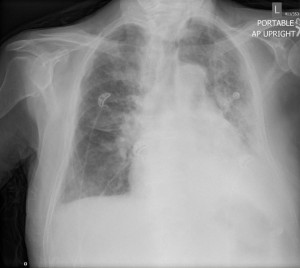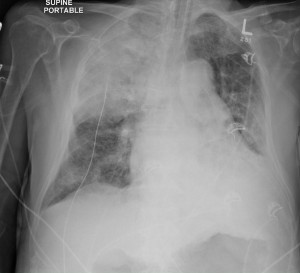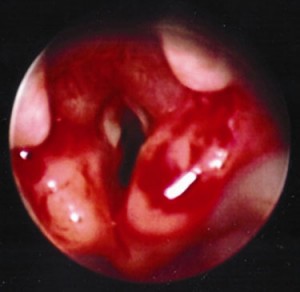This last month I was on a regional anesthesia rotation, which at that hospital, was performed by a dedicated anesthesiologist, fellow and resident in a block room. We had a handful of referrals for post-dural puncture headaches (PDPH) which we assessed for possible epidural blood patch.
First of all, I will refer to this excellent review article on the topic.
It was interesting to go through some of the decision making processes for whether or not to perform epidural blood patching.
Case #1: This patient developed a sudden onset headache with aural fullness, a “whooshing” sound, neck stiffness, and went to the ED. There, she had a plain CT head which was reported as normal, and then a diagnostic LP was performed which was negative for infection and blood. The next few days her headache was worse, and a postural component developed. At that time, she was being considered for blood patching, but a phone call to the patient revealed that she was doing better, and really had not given enough time to see if the PDPH would get better on its own.
She returned to ED when it got worse and was seen by neurology, who ordered an outpatient MRI. The MRI a few days latter showed small bilateral subdural collections (could not discern if it was sanguinous), leptomeningeal enhancement and venous sinus engorgement, all signs consistent with intracranial hypotension. Neurology then recommended the patient undergo blood patching.
When she came to the regional room, she gave a history of still trying to perform at a high level at work, not really taking a break, and having good and bad days. She was having a good day at the time. She was still able to go to work for a few hours sometimes, but other times could not drive more than a block.
We had a very lengthy discussion about the risks and success/failure rate of a blood patch. It was clear that any complication would be unacceptable for such a high functioning individual, and that her expectations of herself were too high given her condition. We agreed that she would rest more, and we would check up on her to see how she was doing. If, for instance, the headache was unbearable at 4 weeks, we would then reconsider doing a blood patch, knowing that it is a very invasive procedure with small but very significant risks.
Case #2: This patient underwent intrathecal chemotherapy and developed a classic PDPH 2 days after procedure. It was so severe that she could not spend much time out of bed, and was quite debilitating. Upon seeing her in consult, it was felt that she had only had PDPH for 4 days, and that perhaps her conservative management was not optimal in terms of analgesia and caffeine. We also added an abdominal binder for whatever it’s worth. To complicate matters and increase her risk with blood patching, she was neutropenic and her CSF was actually negative for malignant cells. Therefore, we had the risk of seeding cancer into her CSF, and possible infection that would not be detectable in terms of fever/white count at the time of blood patching.
In summary:
– An epidural blood patch is often first suggested to the patient by specialists who do not perform the procedure, and therefore cannot give the patients an informed discussion of risks and benefits.
– It is an invasive procedure with small but significant risks. If neurological problems of infection occurs, urgent neurosurgery may be required.
– An inadvertent dural puncture with an epidural needle will make the headache and CSF leak worse, and the risk of dural puncture is quoted as being 0.5-1%. However, all the factors that would make an epidural difficult will increase that risk.
– Conservative management should be optimized and given enough time to self-resolve before resorting to a blood patch, unless there are neurological symptoms or if the headache is extremely severe and debilitating.
– If blood patching fails, it may need to be repeated (maybe several times) and escalating treatments become even more invasive and ineffective.



